Are you having a cesarean section and don’t know what to expect?
Don’t worry you are not alone.
In this post, you are going to learn 17 surprising c-section facts you probably didn’t know.
Let’s dive right in.
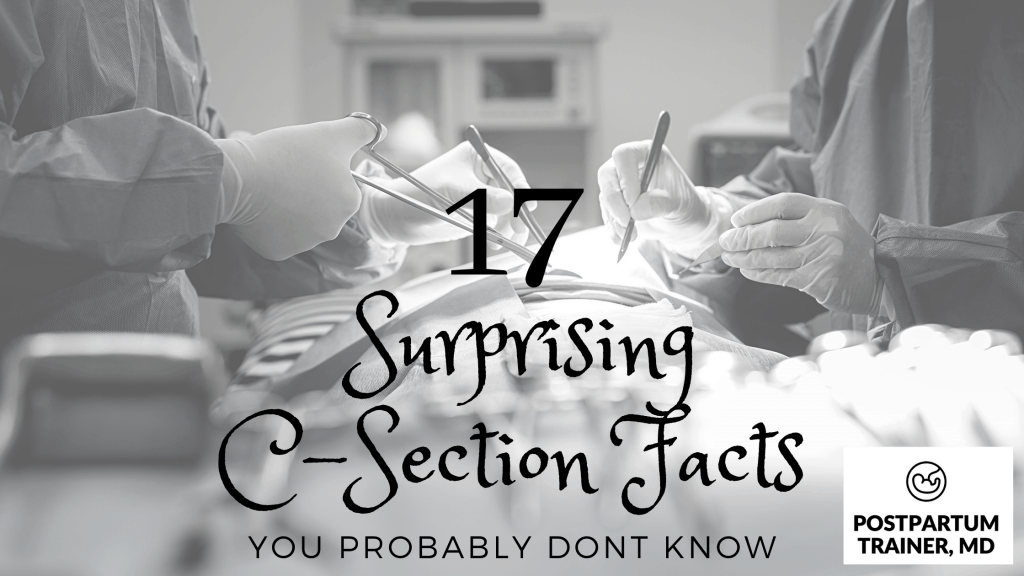
Surprising C-Section Facts You Might Not Know
Let’s go over some interesting c-section facts that you may not know or be aware of.
You will likely be awake and hearing your doctors chatting in the operating room
Don’t take this the wrong way. You want your doctors to be comfortable while performing surgery. Some prefer to chat, some don’t.
You can still feel a c-section, but not pain or temperature
If you have epidural or spinal anesthesia (aka regional anesthesia and NOT general anesthesia), you will be numb below your nipple.
This doesn’t mean that you won’t feel anything.
You will feel tugging and pulling. However, you won’t feel pain or temperature changes.
You can still have pelvic floor dysfunction
It is possible to still have pelvic organ prolapse even if you have had a c-section delivery.
Although the risk is less than that of vaginal delivery, your pelvic floor is weakened just from carrying a pregnancy.
Over 30% of deliveries are cesarean births
The c-section rate in America hovers around 31-33%. This data is from 2019, but the numbers are still true today.
C-sections are considered a major surgery
A c-section is a major surgical procedure!
There are so many layers of tissue that need to be cut just to access your uterus.
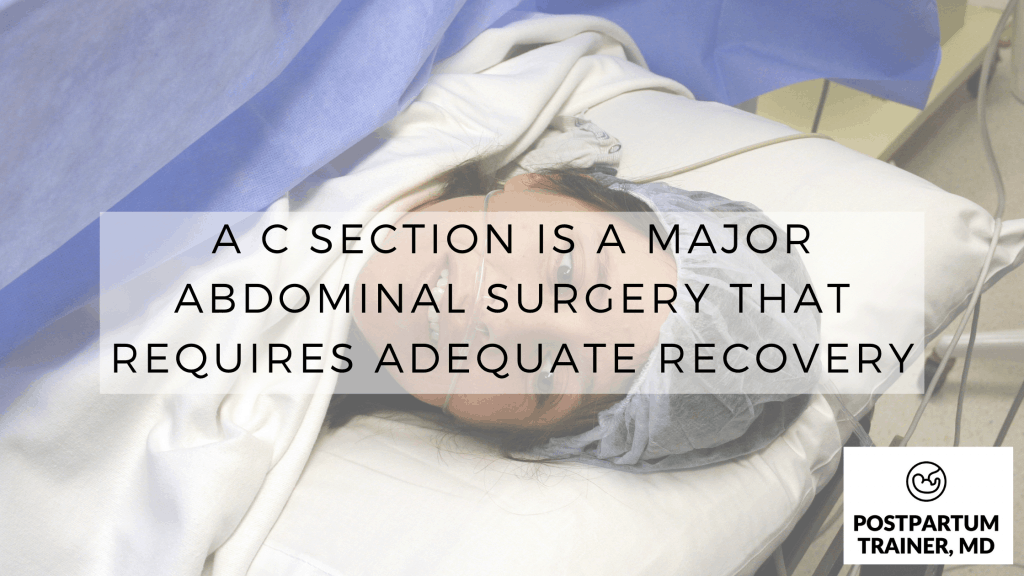
Don’t be fooled into thinking a c-section is the easy way out. You will have pain and your recovery period will be longer compared to a vaginal delivery.
You will likely experience less bleeding than a vaginal delivery, if scheduled
Compared to a vaginal birth, a scheduled c-section can actually have less bleeding as it is done in stable situations.
You won’t be able to walk immediately after
Because of the type of anesthesia given, you will need a few hours after the surgery to allow the medication to wear off.
Thankfully, you should be up and walking on post-op day 1!
There is a risk of cesarean hysterectomy
Anytime we perform a c-section, there is always a risk of cesarean hysterectomy.
A cesarean hysterectomy is the removal of the uterus at the time of c-section.
This will only occur if there is uncontrollable uterine bleeding or the placenta will not detach due to an implantation defect.
Thankfully, this occurs in less than 1% of all deliveries but increases with the number of c-sections you’ve had done.
Common C-Section Myths You May Hear
Now let’s discuss some common c-section myths.
C-Section is more traumatic for baby
A c-section is not more traumatic for a baby. If done under controlled circumstances, a cesarean birth is actually less traumatic for the baby.
C-sections are easier to recover from than a vaginal delivery
A c-section in general is not easier to recover from than a vaginal delivery. It is major abdominal surgery.
As a result, you will have more pain and likely need more time to get back to your usual daily activities.
Many women require pain medication for a few days following the procedure.
You will never be able to lift weights again
This is simply not true.
How would you ever lift up any of your children if you couldn’t lift weights?
With adequate recovery, you will be able to get back to a workout routine. Check out my post-c-section workout plan to learn more.
Once a c section, always a c section
Plenty of women have undergone successful vaginal births after a c-section (aka VBAC).
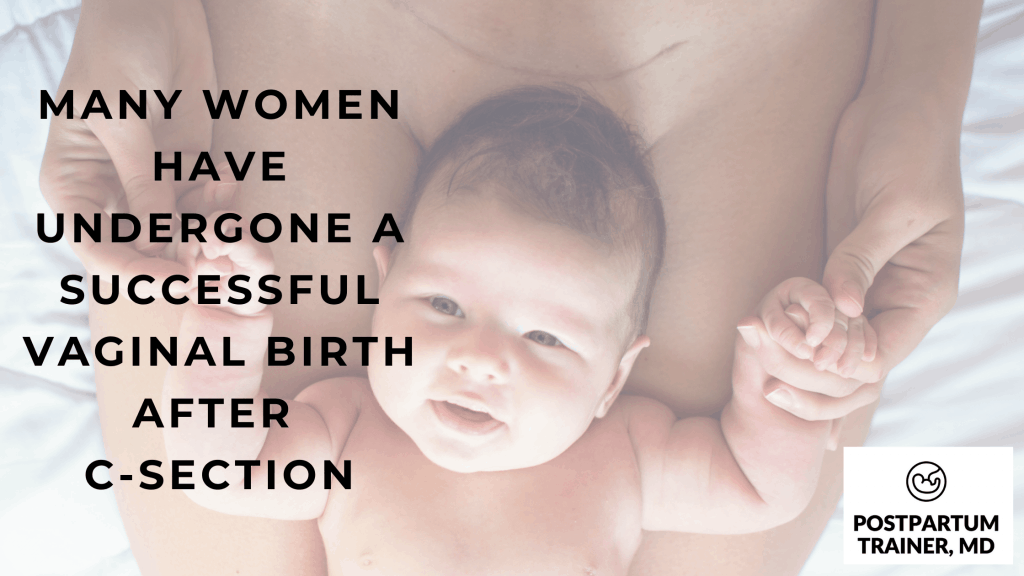
Speak with your health care provider to find out if you are a candidate for a trial of labor after a cesarean (aka TOLAC) in future pregnancies.
In general, women who had a c-section due to malpresentation, non-reassuring fetal status, or multiple gestations are good candidates for TOLAC.
You will never have a flat stomach again
This is certainly not true. With proper nutrition, exercise, and patience you can work towards achieving a flat stomach post-operatively.
Learn more about losing the mommy pooch here.
Your muscles are cut
It is very rare to have your rectus abdominis muscles cut during surgery. Instead, your muscles are often separated to access the uterus.
You cannot do skin to skin
As long as your baby does not require urgent intervention, you will be allowed to have skin contact immediately after your baby is delivered.
Your body does not release oxytocin
Your body releases oxytocin during labor and at delivery whether you have a vaginal or c-section.
You won’t be able to breastfeed
You will be able to breastfeed after the baby is delivered as long as there is no maternal or neonatal contraindication in doing so.
What Are The Risks & Benefits of a C-Section?
As with all types of surgeries, c-section risks include:
- bleeding,
- infection, and
- damage to surrounding structures.
Let’s discuss each one individually.
Risk of bleeding
In pregnancy, your blood volume increases by 50% to support your placenta and growing baby.
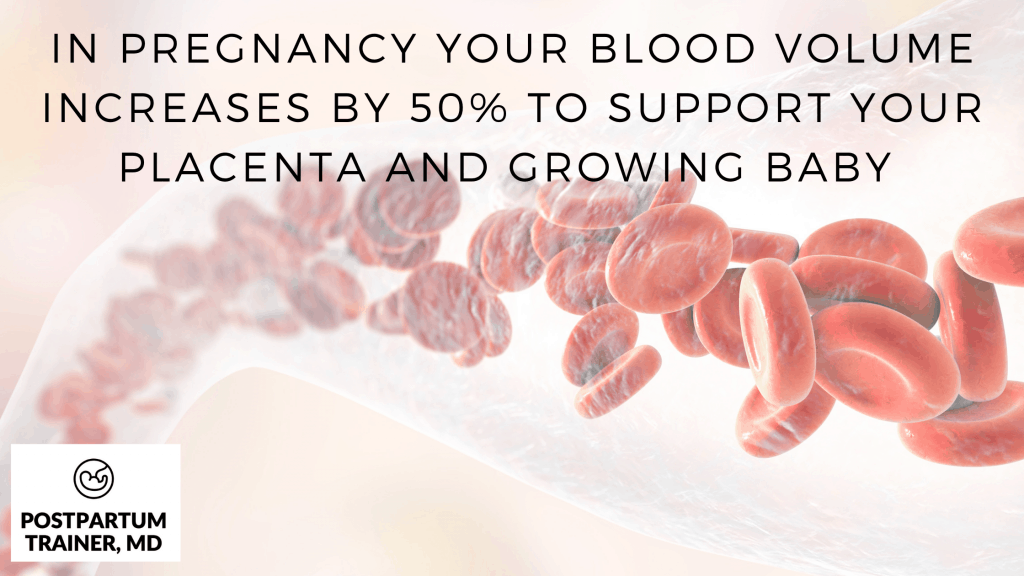
Therefore, your body has a buffer and can tolerate ~1 liter of blood loss at the time of delivery.
Occasionally, you can have excessive bleeding from the surgery which may require additional interventions such as a blood transfusion.
Risk of damage to nearby structures
Because a cesarean section is an abdominal surgery, the organs in the abdomen are at risk of injury.
The main organs include the bladder and bowel.
If these organs are damaged during your c-section, we will call in specialists to help us repair the defect.
Risk of infection
Like all surgical procedures, there is a risk of infection.
If you think about it, anytime you have an opening in your body, there is a chance organisms can enter the incision.
Luckily, there are ways to decrease this risk.
First, you will receive antibiotics preoperatively, and second, we will use sterile technique throughout the surgery.
Now, aside from those 3 general risks of surgery I have mentioned above, there are additional risks specific to people having a c-section.
These include, but are not limited to:
- Postpartum hemorrhage (PPH)
- Deep Venous Thrombosis (DVT) aka blood clots
- Cesarean hysterectomy
- Increased pain
Of these, postpartum hemorrhage is the most likely.
Now, before you get too scared of c-sections, let’s discuss the benefits.
The benefits of a c-section are:
Scheduling
A c-section can be scheduled, giving you an exact timing of delivery.
No vaginal lacerations
If you go for a cesarean section prior to the late stages of labor, you won’t have any tears or lacerations in your vagina.
Decreased risk of pelvic organ prolapse
The risk of pelvic floor dysfunction (aka urinary incontinence and prolapse of the pelvic organs) is higher with vaginal deliveries compared to c-sections.
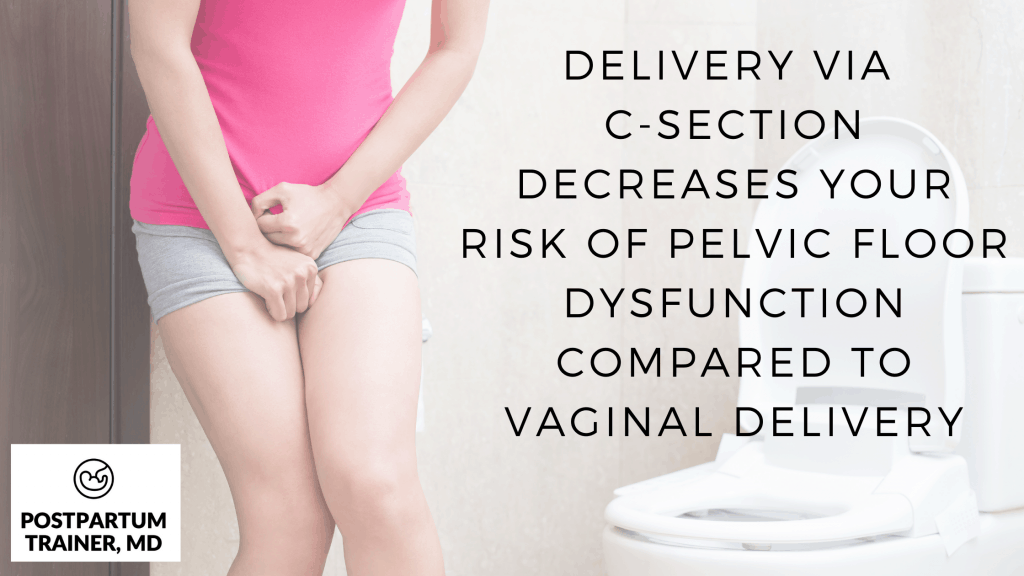
What is the most common reason for a C-section?
In the United States, the most common reason for a c-section is labor dystocia. This means that your cervix has stopped dilating or your baby has failed to descend through the birth canal.
Other common reasons for cesarean section include:
Non-reassuring fetal heart tracing
A non-reassuring fetal heart tracing, or NRFHT for short, is the medical terminology used when your baby’s heart rate drops for a period of time and does not recover.
This can be due to excessive compression of the umbilical cord, decreasing blood flow to the baby.
In this situation, you may undergo an emergency c-section depending on how concerning the fetal tracing looks.
Malpresentation
Malpresentation is the term used when your baby is in the wrong position. Your baby should be upside down, with the head in the pelvis.
The most common malpresentation is breech presentation. This means your baby’s head is up by your chest.
Malpresentation is often present in multifetal gestations (aka twins or triplets).
Repeat c-section
Many women who have had a prior c-section will often have a repeat cesarean section for their next delivery.
However, a previous c-section does not always mean you will need another one in subsequent pregnancies.
More on that later.
Large Baby
Sometimes a baby is too big to fit out of your pubic bone. This is often the case in patients with gestational diabetes and excessive weight gain.
Contraindication to vaginal delivery
There are other medical reasons why you might not be able to have a vaginal delivery.
This includes but is not limited to:
- Placenta previa/accreta
- Placental abruption
- Previous uterine rupture
- Active genital herpes outbreak
- Spinal cord injury in which you cannot push
- Eye conditions that prevent you from increasing your intraocular pressure
- Brain conditions in which you cannot increase your intracranial pressure
- Cord prolapse
- Preeclampsia with severe features necessitating urgent delivery
If you have any questions regarding this list or if you are a candidate for vaginal delivery, is best to speak with your provider.
Why do doctors prefer or push C-sections?
Doctors prefer c-sections because it is the quickest and safest way to get your baby out if we are concerned for your baby’s wellbeing.
You have to understand that our goal as obstetricians is to have a healthy mom and give you a healthy baby.
Let’s understand this a little more.
Your baby communicates to you and the rest of the world in two ways.
Those two ways are:
- Movements or what we refer to as kick counts, as well as
- The fetal heart rate tracing, which is the monitor that we put on your abdomen to hear and see your baby’s heart rate pattern.
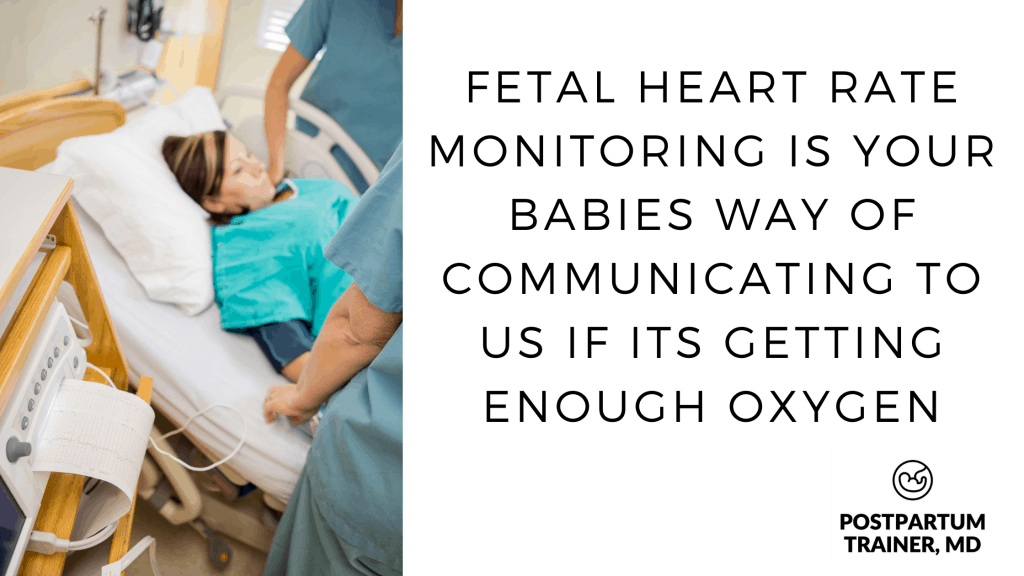
If we see that the fetal heart rate tracing is not appropriate, aka “non-reactive” or “non-reassuring,” your baby is telling us that it is not getting enough oxygen inside the uterus.
In this case, it is better for the baby to be outside the uterus than inside.
When do planned C-sections happen?
A planned c-section happens after 39 weeks gestation as this is when your baby is considered full term.
With that said, there may be a maternal or fetal complication that requires earlier delivery.
This could happen if you have:
- Gestational diabetes or pre-existing diabetes
- Gestational hypertension or chronic hypertension
- Placental abnormalities like placenta previa or placenta accreta
- Fetal growth restriction
- Oligohydramnios
- Premature rupture of membranes
- Twins or higher order pregnancies
It is always best to speak with your doctor on timing of delivery if you happen to have one of these medical or fetal complications.
How long does it take for a cesarean to heal internally?
The cesarean section scar (on the uterine wall) typically takes about 18 months to heal.
This is why if you’ve had a c-section less than 18 months ago you may need to undergo another c-section as there is a risk that the scar on the uterus can open.
This is known as a uterine rupture.
How many kids can I have after C-section?
There is no preset number on how many kids you can have after a c-section.
Generally speaking, the more c-sections you have, the riskier the surgery becomes.
The risks involved with higher order c-sections include:
- hemorrhage
- abnormal placental implantation
- cesarean hysterectomy
However, if you have a VBAC, your risks of hemorrhage, abnormal placental implantation and cesarean hysterectomy decrease.
With that said, grand multiparous women, are always at risk of hemorrhage.
This is a woman who has had more than 5 deliveries.
How long do C sections take on Average?
An uncomplicated cesarean section can take anywhere from 30 minutes to 1 hour.
If complications arise, it can take anywhere from 1-3 hours.
Final Words on C-section Facts
So there you have a complete list of interesting cesarean section facts!
Now I want to hear from you.
Did any of these c-section facts surprise you?
Comment below and let me know.
Get Four Free Workouts To Help Strengthen Your Pelvic Floor & Heal Your Mommy Tummy!

Brittany Robles, MD, MPH, CPT
Brittany Robles is a full-time OBGYN physician, a NASM certified trainer, and a prenatal and postnatal fitness specialist. She holds a Master of Public Health degree in maternal health with a special interest in exercise and nutrition. She is also the co-author of The White Coat Trainer. Learn more about her here.
Sharing is Caring – Send This To A Mom In Need!
References:
- CDC: Births – Method of Delivery. 2019
- Shellhaas CS, Gilbert S, Landon MB, et al. The frequency and complication rates of hysterectomy accompanying cesarean delivery. Obstet Gynecol. 2009;114(2 Pt 1):224-229. doi:10.1097/AOG.0b013e3181ad9442
- Hytten F. Blood volume changes in normal pregnancy. Clin Haematol. 1985 Oct;14(3):601-12. PMID: 4075604.
- Blomquist JL, Muñoz A, Carroll M, Handa VL. Association of Delivery Mode With Pelvic Floor Disorders After Childbirth. JAMA. 2018 Dec 18;320(23):2438-2447. doi: 10.1001/jama.2018.18315. PMID: 30561480; PMCID: PMC6583632.

Am really impressed with the quality of information I got, am actually just going in for a planned c-section in few weeks
Hi Oyinlola,
Thank you so much for the comment!
Good luck with the c-section!!